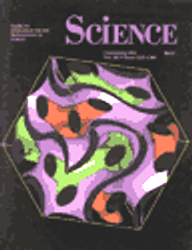-
Cooperative Formation of Inorganic-Organic Interfaces in the Synthesis of Silicate Mesostructures
A. Monnier, F. Schüth, Q. Huo, D. Kumar, D. Margolese, R.S. Maxwell, G.D. Stucky, M. Krishnamurty, P. Petroff, A. Firouzi, M. Janicke and B.F. Chmelka
Science, 261 (5126) (1993), p1299-1303


DOI:10.1126/science.261.5126.1299 | Abstract | Article PDF

A model is presented to explain the formation and morphologies of surfactant-silicate mesostructures. Three processes are identified: multidentate binding of silicate oligomers to the cationic surfactant, preferential silicate polymerization in the interface region, and charge density matching between the surfactant and the silicate. The model explains present experimental data, including the transformation between lamellar and hexagonal mesophases, and provides a guide for predicting conditions that favor the formation of lamellar, hexagonal, or cubic mesostructures. Model Q230 proposed by Mariani and his co-workers satisfactorily fits the x-ray data collected on the cubic mesostructure material. This model suggests that the silicate polymer forms a unique infinite silicate sheet sitting on the gyroid minimal surface and separating the surfactant molecules into two disconnected volumes.